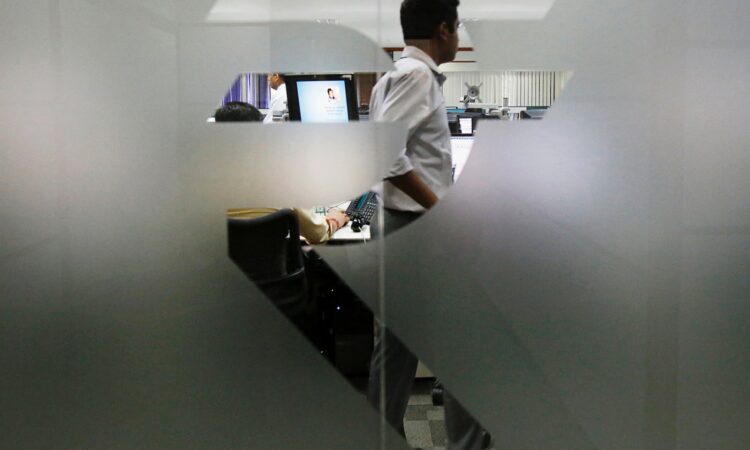
MUMBAI, Jan 15 (Reuters) – Investors are betting that India’s rupee will break out of its narrow range and rally this year, and are expressing that view via currency options.
Volumes in the dollar-rupee options market have surged in the first few trading days of 2024, and the direction of these trades shows market participants expect the rupee to rise, escaping the central bank-induced narrow range of last year.
The rupee, on Monday, climbed to 82.7800 to the U.S. dollar, its highest in more than four months. It has gained 0.4% so far in January, while other major Asian currencies have fallen 1% to 1.5%.
The notional value of over-the-counter dollar-rupee (USD/INR) options traded in the United States so far in January is already 1.5 times that of December. Firms are required by U.S. law to report such trades to Swap Data Repositories.

“Offshore, nearly all banks are calling on their clients to take long positions (on the rupee), whether via outright or put (USD/INR) options,” a portfolio manager at a Singapore-based hedge fund said.
A put option entitles the buyer to sell the currency pair at a particular rate, called the strike price, in the future. The buyer pays a small premium for this option.
Options are popular alternatives to betting on a currency, providing a different payoff compared to outright bets. The loss for an option buyer is limited to the premium paid.

The dollar/rupee volatility skew indicates the preference for bets that the Asian currency will rise. The three-month risk reversal turned negative in December, indicating investors are willing to pay more for betting that the rupee will rise.
The Reserve Bank of India’s (RBI) stranglehold on the rupee throughout last year thwarted expectations of a rally to match the country’s healthy macros and robust inflows into the equity and debt markets.
That drew criticism from the International Monetary Fund, which reclassified India’s currency regime to a ‘stabilized arrangement’, from ‘floating’, in December.
The rising interest in put options is primarily based on bets that the “frequency of RBI intervention will come off, following the IMF’s criticism”, the hedge fund portfolio manager said.
That could mean the rupee could break out of last year’s range, which was the narrowest since 2002.
“I do think post the IMF classification, the RBI will allow the rupee a wider band, with a slightly appreciating bias,” said Dhiraj Nim, a forex strategist at ANZ.
“The soft dollar and the buildup in FX reserves that has happened will allow the RBI to intervene less.”
The rupee’s volatility was among the lowest in Asia last year and even its implied or expected volatility currently is just a tad higher than on the pegged Hong Kong dollar.
“The low implied volatility makes directional bets on the rupee via options relatively inexpensive, which I think is contributing to the volumes,” an FX salesperson at a Singapore-based bank said.
Low expected volatility reduces the premium that investors have to pay to buy USD/INR put or call options.
Sign up here.
Reporting by Nimesh Vora; Editing by Vidya Ranganathan and Savio D’Souza
Our Standards: The Thomson Reuters Trust Principles.
